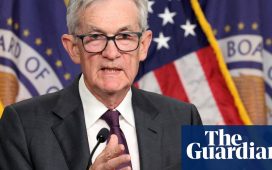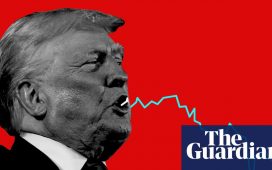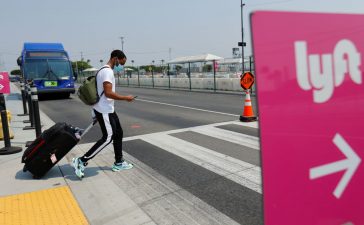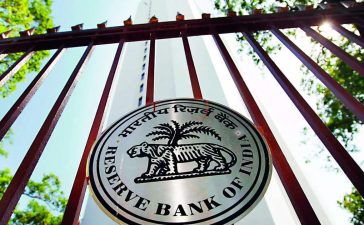The United Auto Workers has scored a major victory. It’s still awaiting a vote by union members, but it’s a big deal – a 25% wage increase over the four and a half years of the contract, cost-of-living increases that will further ratchet up hourly pay, the right to strike over plant closures and a shorter time period for workers to reach top pay.
If the victory ripples across the auto industry and encourages wage increases in other sectors, it will also be a victory for the American middle class.
For 30 years – from 1946 to the late 1970s – the American middle class expanded. That was largely because unions won increases in wages and benefits that roughly tracked gains in overall productivity.
Non-union companies gave their workers similar raises because they knew they’d be targets of union organizing if they didn’t.
It was America’s postwar social contract.
But since the late 1970s, the wages of production workers have been nearly stagnant, adjusted for inflation. Most gains have gone to the top.
What happened?
For one thing, activist investors (called “corporate raiders” in the 1970s and 80s, and “private equity managers” today) got the right to mount hostile takeovers of companies, and then demand fatter profits.
Since payrolls comprise about two-thirds of corporate costs, the raiders forced corporations to keep a lid on wages and benefits.
To do this, corporations had to bust unions – outsourcing jobs abroad, moving to anti-union (AKA “right-to-work”) states and firing workers who tried to organize.
Ronald Reagan legitimized all this when in 1981 he fired more than 11,000 striking air traffic controllers represented by the Professional Air Traffic Controllers Organization, or Patco.
The result was a dramatic decline in the bargaining power of ordinary workers. And with it, a shrinkage of the American middle class.
In the 1950s, over a third of all private-sector workers were unionized. Today, unionized workers comprise just 6% of private-sector workers (10% of all workers belong to a union but many work in the public sector).
From 1946 through the early 1970s, unions staged hundreds of major strikes each year. After 1981, the number of major strikes dropped to a few dozen per year.
Is the pendulum now swinging back?
So far this year, there have been 22 major strikes, 17 of them at corporations.
Contracts negotiated by the UAW, Hollywood writers, UPS workers, Kaiser Permanente healthcare workers and even university employees, among others, provide significant pay increases and more job security (writers even got some protections against AI).
Most Americans are solidly behind the workers. Polls show that the public supported autoworkers over the companies by large margins.
Confidence in big business is at its lowest point in decades while approval of labor unions is near its highest.
What accounts for this burst of labor activism, remarkable run of labor victories and public support of unions?
Partly, I think, it’s the harsh inequalities exposed by the pandemic.
The pandemic dramatically revealed how much easier it is for rich Americans to survive than everyone else, and how dependent all of us are on average workers simply doing their jobs.
Couple this with the rise in populist politics – starting with Bernie Sanders’ surprisingly strong showing in 2016 while Donald Trump posed as the “voice” of workers – in a system looking increasingly rigged against average people.
In addition, union victories have animated a virtuous cycle – encouraging more workers to join unions and more unions to flex their muscles and demand wage hikes.
And then there’s the tight post-pandemic labor market, in which consumers are spending like gangbusters, the economy is surging, and employers worry about getting and keeping the workers they need.
So, will the pendulum continue to swing toward unions?
I’d love to think so. But I frankly worry about the Fed chair, Jerome Powell, and his colleagues.
They continue to believe – wrongly – that inflation is being pushed by wage increases rather than by corporate profits.
If they succeed in slowing the economy to the point where workers lose whatever bargaining leverage they now have, it’s far from clear that populist politics or more vivid inequalities or a string of labor victories will be enough to put organized labor on the path to where it was four decades ago.
-
Robert Reich, a former US secretary of labor, is professor of public policy at the University of California at Berkeley









